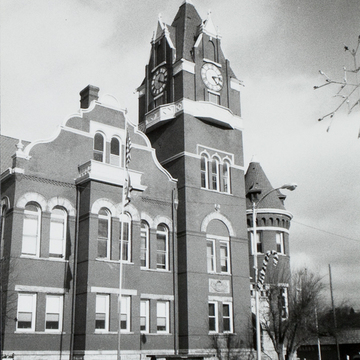After the failure of numerous petitions to take the county seat from St. George, partisans from Parsons finally tallied sufficient votes to make the change effective on August 7, 1893. A week earlier, according to an article in the Parsons Advocate, “a group of prominent citizens and hoodlums” jumped the gun by stealing county records from St. George in the dark of night and bringing them to Parsons.
Building a worthy seat of justice took a while longer. Manufacturers Record announced a call for plans and specifications in December 1897. Frank P. Milburn, then of Charlotte, N.C., won the commission. In his History of Tucker County, Homer Fansler described the result as “a monstrosity,” but later generations consider Milburn's confection more a delightful period piece. Quintessentially Victorian, as the term is popularly understood, the hard-pressed red brick structure with quarry-faced sandstone foundation and details is a mélange of parts from a number of stylistic sources. Prominent gable ends display baroque curves and countercurves typical of Flemish design. The Romanesque-inspired entrance portal squeezes between towers that, at least in their upper stages, seem more Chateauesque than anything




















